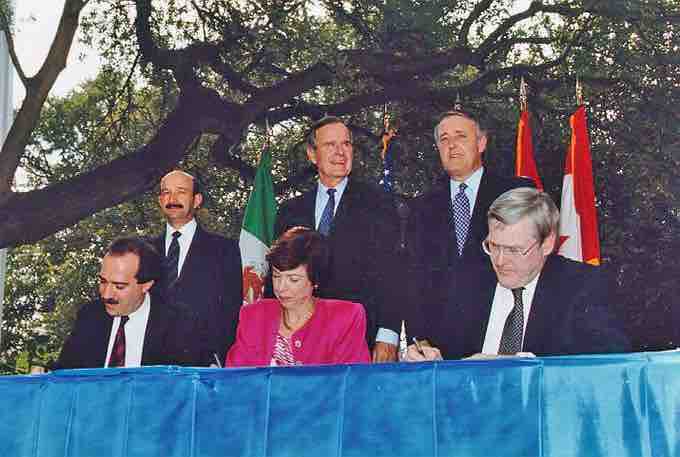Many different types of groups attempt to influence United States policy. For instance, certain demographic groups may favor policies that benefit them the most. Other groups may create formal institutions, known as think tanks, to advance their cause. Foreign governments can also behave as interest groups when it comes to U.S. foreign policy. For instance, Saudi Arabia launched a lobbying campaign to improve its image in the United States after it came under criticism for failing to crack down on terrorist groups after the 9/11 attack in New York.
Because of the wide variety of special interest groups, conflict between groups on an issue is common. The debate over creating free trade areas, like the North American Free Trade Agreement (NAFTA) , placed business groups in competition with labor and environmental groups in garnering the attention of policymakers toward their divergent causes.

NAFTA Member Countries
The NAFTA initialing ceremony, in October 1992. Events, such as the signing of the North American Free Trade Agreement (NAFTA), highlight the differences among special interest groups and the competition that takes place between them to capture the attention of policymakers.
Those interest groups that are able to advance their causes to the policy agenda must possess certain key factors. Political scientist Charles O. Jones has organized these factors into six categories. First, the number of people affected plays a role in what policies are adopted. For example, senior citizens often make their demands onto the policy agenda because of their large numbers and inclination to vote. The extent to which constituents are organized and the resources available to them serve as other factors that influence whether interest groups can advance their causes to the policy agenda. A fourth factor is whether government representatives exist that can link interest groups and their problems with governmental processes.
The skills that interest groups utilize to advance their causes are also important in accessing the policymaking process. Many organizations only employ the most experienced and capable lobbyists to represent their causes. Meanwhile, the sheer intensity of interest groups can make up for inadequate resources or numbers of constituents.